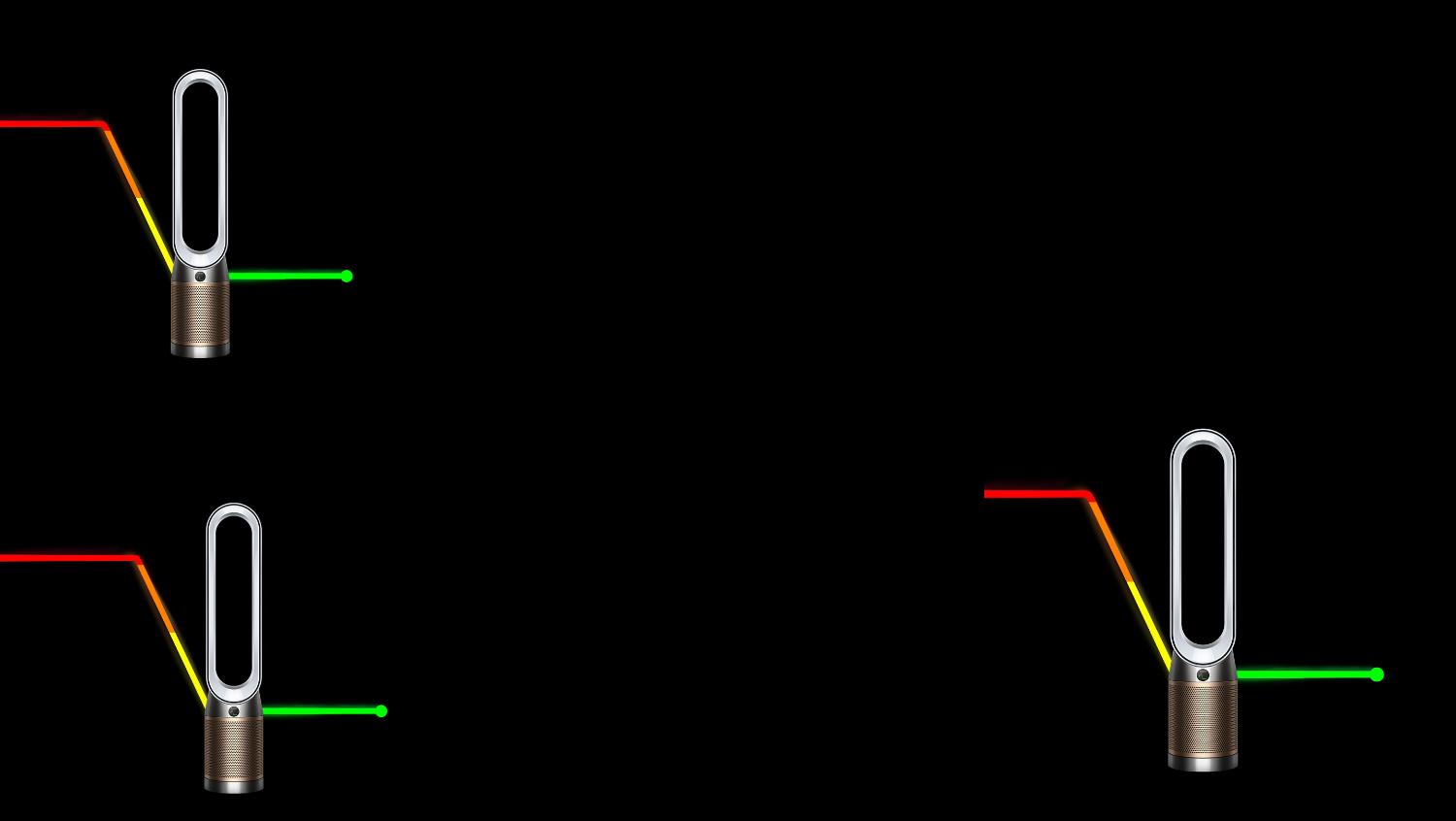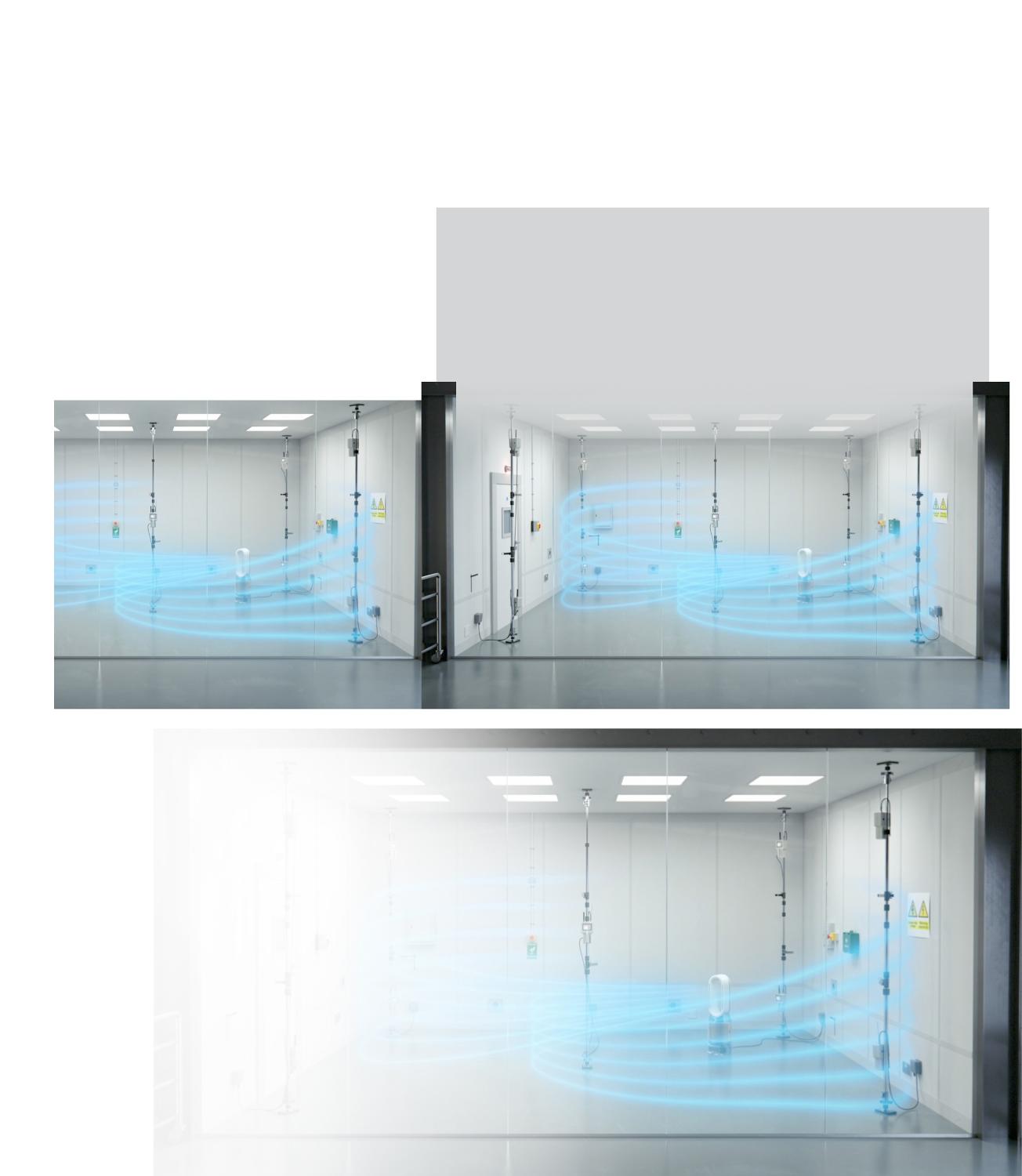

-
-
Fully-sealed machine
Fully sealed to HEPA H13 standard. So the pollution captured inside stays inside.²
-
Explore Dyson air purifiers by functionality
Dyson offers a range of advanced purifiers that remove gases and odors and capture 99.97% of allergens and pollutants 0.3 microns in size.
-
Purify and cool you
-
Purify, humidify, and cool you
-

Frequently asked questions
Indoor air pollution can contain a mix of pollutants, including particulate matter (PM) and volatile organic compounds (VOCs).
Many indoor activities and household products can release invisible pollutants. As our homes become increasingly well-sealed, it may seem like we're shutting pollution out – but in truth, we may be shutting it in.
Four indoor air pollutants which may be causing poor air quality in your home are:
Mold. Molds are fungi that reproduce by making and releasing spores. It's usually found where there is excess moisture.
Volatile organic compounds. Or VOCs, can be released from building materials, personal care and cleaning products.
Particulate matter. These can include dust, smoke and exhaust fumes.
Allergens. Common allergens include pollen and pet dander. Biological pollutants from pets include multiple proteins in a pet’s fur, hair, saliva, urine or dander.
Dyson's sealed HEPA filters capture 99.97% of microscopic allergens and pollutants as small as 0.3 microns (PM0.1).
Here are a few actions you can take to improve the air quality in your home:
Invest in an air purifier. One helpful solution for improving your indoor air quality is an air purifier. Be sure to choose one which automatically senses, is fully sealed, and has long-range air projection.
Get rid of dust. House dust can be a combination of dust mites, pet dander and pollen. Keeping on top of cleaning and vacuuming can help overall air quality.
Source control. Reduce pollution sources in your home (like burning scented candles).
Dyson engineers are perfectionists. Channelling our relentless dissatisfaction, we re-engineered the entire range to ensure every purifier is fully sealed to HEPA H13 standard.
This ensures we capture 99.97% of ultrafine particles and prevent pollutants from leaking back into the air you breathe.
Yes. Dyson air purifiers capture viruses, including the SARS-CoV-2/COVID-19 virus.*
VOCs are 'Volatile Organic Compounds', meaning they are compounds containing carbon and are generally a gas at room temperature. Indoor VOCs can come from a range of activities, such as spraying perfumes or hair sprays, painting or cleaning.
When you see VOC on your machine's monitor or in your MyDyson™️ app, you're experiencing a rise in VOCs, and your machine is working hard to remove the pollutant from the air, and project cleaned air into your home.
PM2.5 is particulate matter with a size of 2.5 microns or less, for example dust, ash and smoke particles. These can be released from a range of household activities such as burning candles or cooking.
When you see PM2.5 on your machine's monitor or in your MyDyson™️ app, you're experiencing a rise in PM2.5, and your machine is working hard to remove the pollutant from the air, and project cleaned air into your home.

﹡Dyson purifiers were challenged with airborne SARS-CoV-2 (the virus that causes COVID-19) at an independent lab, in a 0.37 m3 chamber for 90 seconds. Dyson Purifiers were also challenged with Phi-6 bacteriophage (a surrogate to test SARS-CoV-2) at an independent lab, using a 30 m3 chamber. After 90 minutes at maximum fan speed, the airborne concentration in the chamber was reduced by 99.9 %. Real-life efficacy may vary.
Applicable to the following models:
TP07/TP7A - Dyson Purifier Cool
TP09/TP9A – Dyson Purifier Cool Formaldehyde
HP07/HP7A – Dyson Purifier Hot+Cool
HP09/HP9A – Dyson Purifier Hot+Cool Formaldehyde
PH03/PH3A – Dyson Purifier Humidify+Cool
PH04 – Dyson Purifier Humidify+Cool Formaldehyde
BP03/BP04/BP06 – Dyson Purifier Big+Quiet Formaldehyde
¹Automatically refers to when the machine is in Auto mode.
2Particle challenge by DEHS oil specified in EN1822 within a chamber specified in ASTM F3150.
3Tested In maximum setting for air projection, tested in Auto mode for purification coverage.









